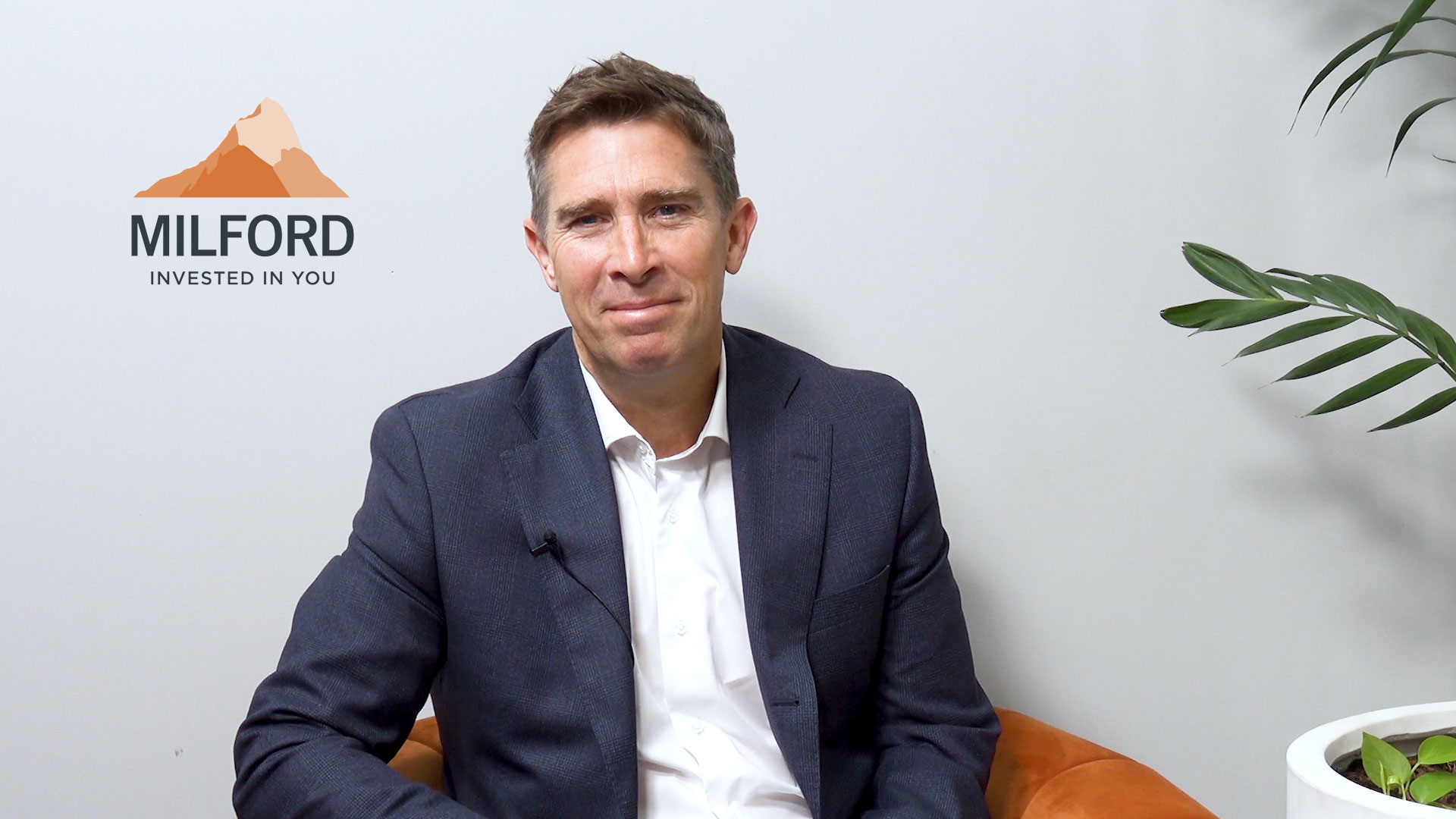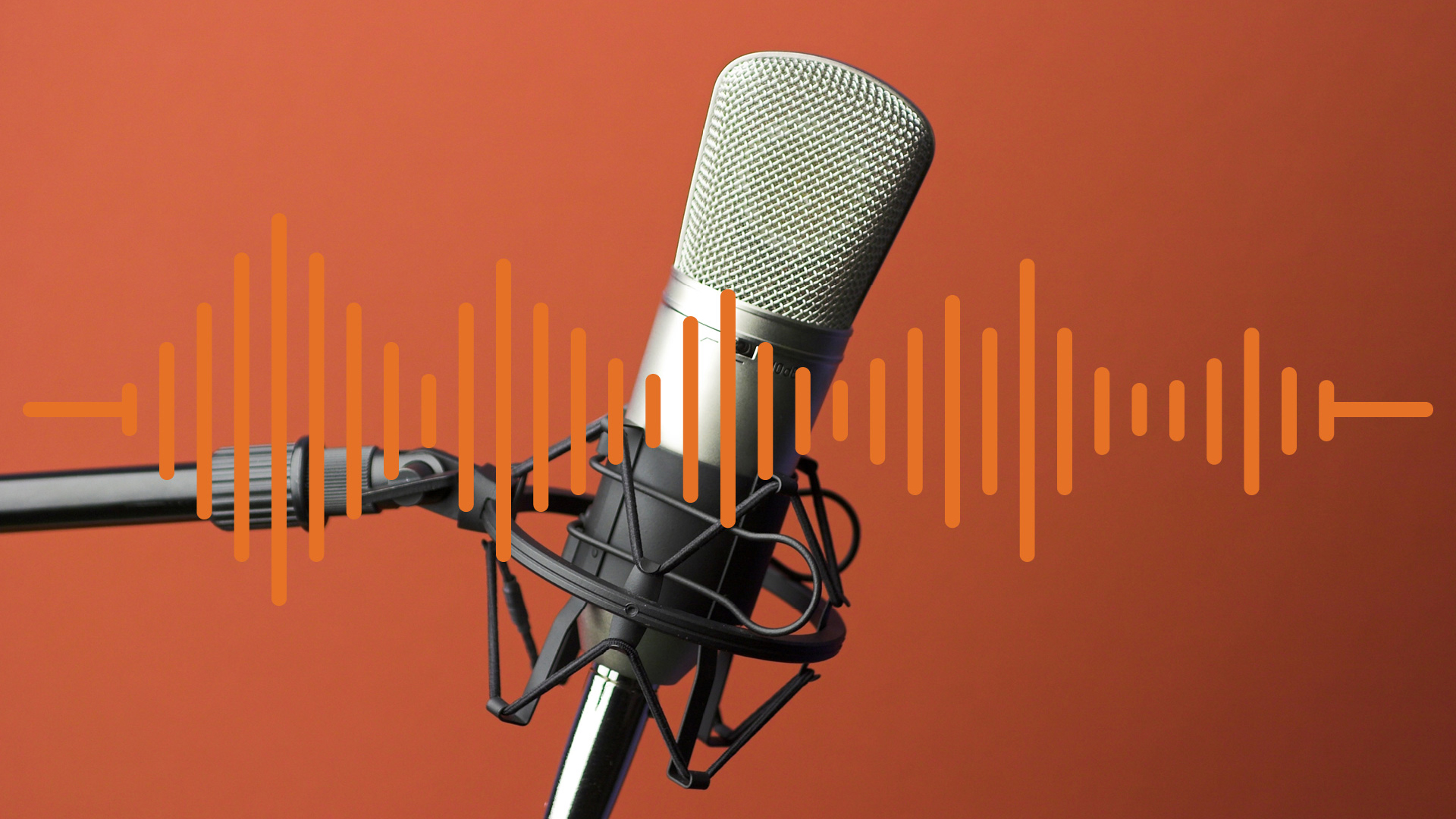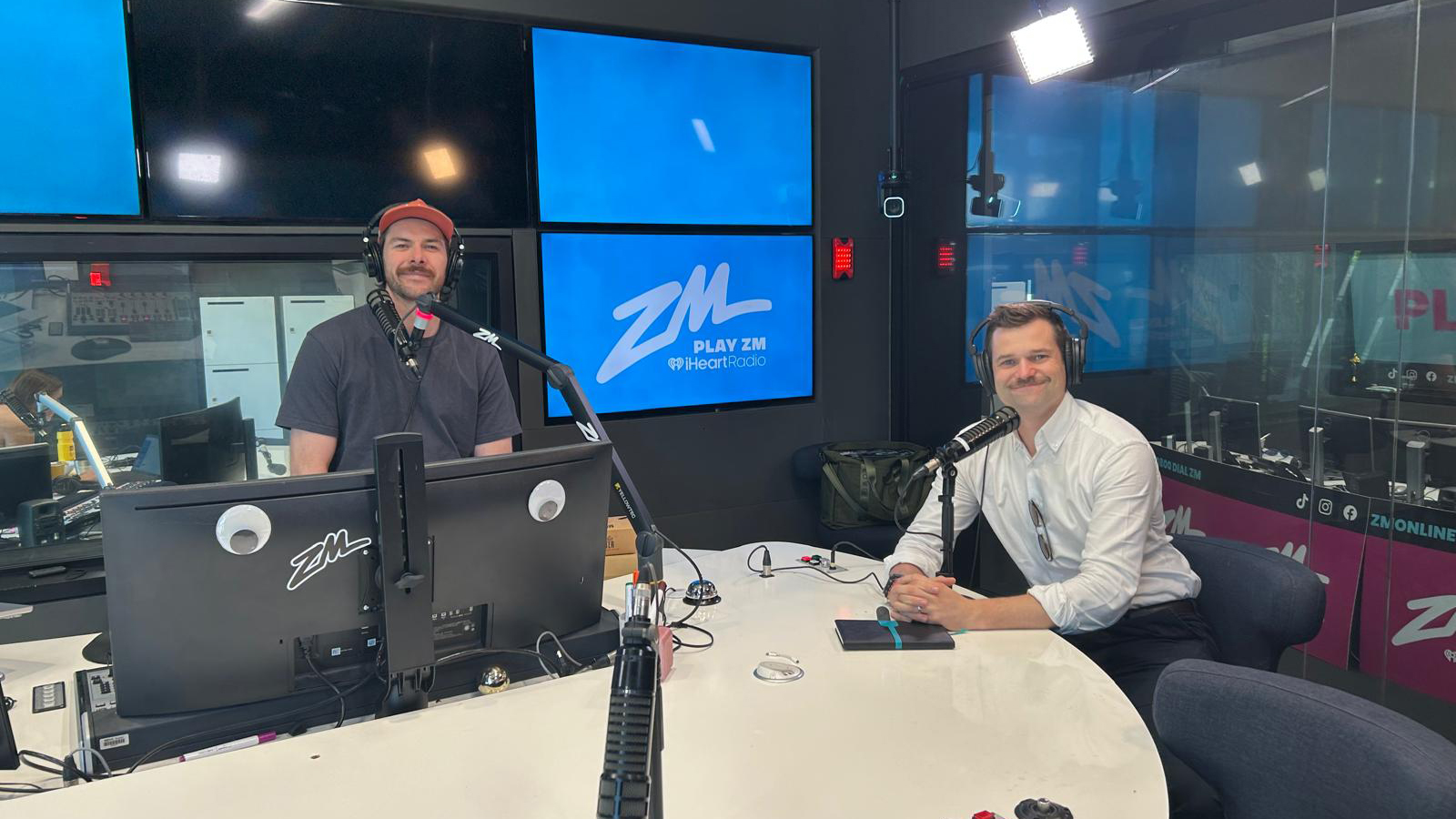Investing in KiwiSaver from day one of your working life is probably not top of every Gen Z’s list. But if you consider the impact of compounding interest, the numbers start to stack up. Murray Harris, Head of KiwiSaver and Retail at Milford, breaks down those numbers with Ryan Bridge, and provides some helpful tips for the savvy young investors in your life.
Listen.
Click here to download the MP3 file or listen to the podcast on your favourite platform:
Read.
Bridge talks Business: 23 September 2025
Episode Transcript
Ryan Bridge
Kia ora and welcome to Bridge talks Business with Milford. This episode is dedicated to Gen Zs and millennials. Murray Harris from Milford has crunched the numbers on your savings and retirement so you don’t have to. Last week we spoke about the magical age you need to start saving and investing to make sure that you keep the comfortable life you’re used to when you can’t or won’t work.
The answer might surprise you. The numbers might surprise you today, too. If you’re a regular listener and you’re a bit older, feel free to forward this onto your kids or your grandkids or younger people in your life. First, here’s your top five business bits.
1. The US Fed – that’s their central bank – cut a quarter of a per cent but described it as more of an insurance cut to keep the economy going rather than the start of a pedal to the metal cutting cycle.
2. In contrast, the bank of England held rates steady. They are keenly focused on keeping inflation in check. Unlike the US, which has missed their inflation target for the last four years, now.
3. US consumers are a resilient bunch. US retail sales increased for August, partly due to those higher prices inflation, but also wealthier Americans feeling richer with the stock market going gangbusters.
4. New Zealand Q2 GDP was grim, down 0.9 quarter-on-quarter. But behind all that noisy data – in fact the noisiest it’s been in about 25 years – details of the print were more encouraging. Household consumption rising a modest 0.3 quarter-on-quarter.
5. It’s a quiet week on the data front, but watch the AI enthusiasm drive those tech stocks higher.
Alright, let’s not muck around. Murray is here with the numbers. Let’s crack into it. This is Murray Harris, head of KiwiSaver and Retail at Milford. Just a reminder, this segment is informational only and should not be considered financial advice. Murray, welcome back.
Murray Harris
Great to be back.
Ryan Bridge
Good to see you. Now, you were watching last week. We had Jane Wrightson on – the Retirement Commissioner. I was quite shocked. I mean, it’s not fair that as soon as you start working, you have to start saving for when you’re not working. But you think that’s probably on the money?
Murray Harris
Yeah, I think she’s right. I mean, I was really quite pleased to hear her say that you should start saving from your first pay packet. You know, it makes a lot of sense in a lot of ways. The longer you can benefit from the compounding returns of investing from a very young age. And, you know, when you start working, you’ve got that extra income, so why not? Albert Einstein said compound interest is the eighth wonder of the world. Those who understand it, earn it. Those that don’t, pay it. So, you know, the earlier you can start saving, the better. And the longer you’re going to benefit from the effects of compounding interest and compounding returns.
Ryan Bridge
I’m not going to argue with an Einstein quote. What I like, Murray, is you’ve come along with some data, some hard numbers for us. So crunching the numbers, let’s start with if you’re 18 and you come out of school, you go into a job, you start working and you start investing in KiwiSaver. What are we looking at?
Murray Harris
You were saying to Jane last week, oh, maybe you start saving in your mid 20s – you have a few years of earning and spending and enjoying that money. And she said no, no, do it from your first pay packet. So I thought well, what’s the difference at 18 and 25? Right. Let’s say you get your first job at 18. First pay packet – I looked at the median income for an 18-year-old last year and it was $54,000. So let’s assume they’re going to do … let’s talk about the new rates coming from 2028 in terms of contribution rates. Let’s just assume four from the employee and four from the employer into a growth fund.
By age 65 that 18-year-old’s going to have a KiwiSaver balance of $429,000, which is going to give them $350 a week in income at retirement from age 65 through to 90, on top of their New Zealand super. That’s a reasonable amount of money, just under half a million dollars. It you wait until you’re 25, even though your income has gone up – the median income for a 25-year-old is $66,000 – let’s assume doing the same four plus four into a growth fund. They end up with $383,000 at age 65. That’s $46,000 less to enjoy. That’s $40 a week less to spend in retirement. That’s a lot of money. And it can be a couple of bottles of wine or, you know, a lunch out every week. So it makes a difference.
Ryan Bridge
I suppose the counter to that is that seven years between 18 and 25, that I’m not spending 4% at the pub. Right.
Murray Harris
Well, this is the point, right? You get used to living on your take home pay. So if you take that money out from your first pay packet, you get used to spending what you’ve got left. I love Buffett quotes. He’s one of the world’s best investors and probably a pretty good saver. He said, do not save what’s left after spending, but rather spend what you’ve got left after saving. It’s a bit of a quote to get your head around, but it makes complete sense. He’s saying prioritise your saving ahead of your spending. Of course we’ve got to cover our basic living costs. But what do we all do? We go and spend like crazy and we go, oh, I’ll save what’s left, and that’s actually the wrong way to think about it.
Ryan Bridge
Yeah, no, I get it – Buffett, Einstein. I’m not arguing with this. But also the thing with KiwiSaver, you talked about compounding interest, but with KiwiSaver, it’s not just my 4%. Right? The employer is giving their 4% too.
Murray Harris
That’s right. Yep.
Ryan Bridge
So it’s more than that.
Murray Harris
So, if you delay your saving for those seven years, you’re not getting your employer’s contributions, you’re not getting the government’s contributions and you’re not getting the compounding effect of the investment returns. And that’s seven years. That’s how you very quickly get to that $46,000 difference.
Ryan Bridge
Alright. What if you’re already beyond this? You know, you’re like me in your 30s. Have you done some numbers for a 30-year, 40 year old?
Murray Harris
Yeah. I mean, look, the longer you delay, the worse it gets, even though your average income goes up. But I would say if you’re not already saving, there’s never not a good time to start. Right? So if you’re not doing it already, start today. But if we look at those same numbers for a 30-year-old, even though the median income for a 30-year-old is $72,000 – again four plus four into a growth fund, at age 65 the 30-year-old’s going to end up with a $331,000 KiwiSaver balance.
That’s a $100,000 less or $80 a week less to spend in retirement versus the 18-year-old, and then a 40-year-old. Median income $79,000, four plus four into a growth fund, you end up with $214,000 at age 65. That’s half what you would have had if you started at 18. It’s $170 a week to spend in retirement versus $350. So yeah, the longer you delay, the worse it gets.
Ryan Bridge
And that means you’re either having to work longer than you would otherwise want to or have to, or make some pretty tough choices about what you can actually afford in your retirement.
Murray Harris
Probably both.
Ryan Bridge
Yeah, some big decisions. Now, I’m assuming that when you talk about the median income for a 25-year-old, say, you’ve put it in a calculator, worked out what the median income will be at 25 and then 26, 27 – not just at 25 for the rest of their life. Right.
Murray Harris
It adjusts. So I think a 3.5% adjustment in salary from that age, is the way our calculator works. So people can do these figures for themselves. It’s on our website. It’s called the KiwiSaver Retirement Calculator. And you can go in and plug in your own numbers and all the assumptions are inside that you can have a look and see what the assumptions are that we’re using. We adjust for inflation, we adjust for wage inflation. And then you can try different contribution rates, because I’ve just used four plus four. But imagine if you were doing six or eight or 10. You know, you can very quickly get to a $1 million retirement nest egg by having a play around with the calculator.
Ryan Bridge
Interesting. Okay. So the difference between those two outer age groups is quarter of a million bucks, basically.
Murray Harris
Yeah.
Ryan Bridge
Potentially. Alright, so what about when you’re young and you get into your first job, and you get put into – and I was in one of these for probably 10 years – to a default KiwiSaver provider. What is that? And do you have to stay there? How do you look at changing that?
Murray Harris
Yeah, well that is the other important thing for young people. You know, if you’re joining the workforce, let’s say you’re that 18-year-old getting your first pay packet, you probably haven’t thought too much about “oh, KiwiSaver. Am I going to do it? Which provider should I choose?” So you’ll be most likely defaulted into one of the six default providers.
Your employer is probably unlikely to be talking to you about your KiwiSaver. It’ll just happen. You’ll get a KS2 form probably, where you fill in all the details of your ID number, and your name and address, and payroll and bank account. There’ll probably be a KiwiSaver form, and you’ll tick a box and they’ll deduct the contribution from your salary, and that’ll go to a default provider.
There are six default providers, but there are 28 providers out there, over 300 funds to choose from. So you don’t have to stay in a default fund. And the default funds are all balanced funds. So if you were 18 and let’s say you were saving for anything more than seven years, a balanced fund may not be the appropriate fund. You might be wanting to look at a growth or an aggressive fund so you can grow your funds faster. And you’ve got time on your side to be able to handle the ups and downs of markets. So, you can move to another provider and you can choose a different fund, might be a growth fund.
Ryan Bridge
And how do you know? I mean, at my age I’m like, yeah, I’m going as aggressive as I can because you’ve probably got a bit more time on your side. You can probably wear a bit more risk. Is that what you would normally advise people – or how do people figure out which fund to go in?
Murray Harris
Depends on your goal and your time horizon. So, you know, an 18-year-old might be thinking, I want to buy my first home when I’m 25. In that case, seven years, a balanced fund might be appropriate. But let’s say they’re thinking well I’m 18, I’m going to start saving for my first home. I’m going to buy that when I’m 30 or 35 or whatever it might be. They’ve got a longer time horizon. They could afford to take more risk. And so a growth fund might be more appropriate. If you’ve already got the first home and let’s say you’re in KiwiSaver at 25, you’re in it for 40 years. So your goal is for retirement, so you can afford to take more risk. You can ride the ups and downs of markets. And so generally you’d be looking at a growth or an aggressive fund.
Ryan Bridge
Now there’s a lot of options out there obviously for people to choose from and a lot of different providers. And there’s an old Māori proverb – and I know you’ve been giving me some quotes today -that says a kumara should never talk about how sweet it is. But, it would go amiss if we didn’t mention some of the awards that Milford has been picking up just recently.
Murray Harris
Look, we’re very, very proud of the awards. And I guess they help people decide who’s a good provider. There is so much information out there. I should mention the Sorted website. Jane was here last week, sorted.org.nz. You can go and compare providers on things like performance and service and fees.
There’s the Morningstar survey where you can compare funds after fee returns. And I say to people, look at the long term returns, five and ten years. Don’t look at the best performing fund in the last quarter or the last year. And there are a number of awards now that are awarded to providers who have shown excellence in market-leading performance, service, fees and value for money.
And so we were very, very proud this week to have been announced the Canstar Provider of the Year for KiwiSaver for the sixth year in a row, and also the Canstar Outstanding Value Provider of the Year for the sixth year in a row. So I think they call that a double hat trick, and that came on the back of two weeks ago being named Canstar’s Most Satisfied Customers Award for KiwiSaver.
And that award I’m very, very proud of because that’s a survey of over 3000 KiwiSaver members from right across the industry, across lots of different providers. And Canstar asked them a series of questions. Basically, how satisfied are you with your provider in terms of their performance, their service, their value for money, their fees? And we’ve come out number one in that one for the second year in a row.
So, extremely proud of the team and what we’ve achieved there. But of course, we’re working hard on behalf of our members. We don’t go out to win the awards. We exist to help our members and our clients achieve their savings and retirement and financial goals, but very, very nice to be recognised, along the way.
Ryan Bridge
That’s a hell of an achievement. And when I’m out and about, I obviously have an affiliation with Milford. People rave about Milford. So, congratulations.
Murray Harris
Thank you very, very proud.
Ryan Bridge
Well done. Now, just before we wrap up, because you’ve given us the data, you’ve given us the numbers, I want your top tips, your top three tips for people who are looking at getting into KiwiSaver, investing in KiwiSaver, or who are in perhaps a default scheme and haven’t really thought about it before.
Murray Harris
Yip. Look, I think Jane’s absolutely right. Start as early as you can. Your first pay packet is a great time to start – before if you can. Again, maximise the effects of the compounding returns. Let compounding interest be your friend. Coming back to the Einstein quote. Nmber two, partner for success. First pay packet to final pay packet could be 50 years or more. Right. So it’s a very, very special relationship. It’s one you need to have trust in and confidence that your provider can help you achieve your financial goals. And number three, use that independent research. Look at the research reports that are out there. Look at the awards and use them to help you choose a provider that you think can help you achieve your goals, and has a long and consistent track record of excellent results.
Ryan Bridge
Excellent. Murray, well done.
Murray Harris
Thank you very much.
Ryan Bridge
See you again.
Murray Harris
Thank you for having me.
Ryan Bridge
That was Murray Harris, Head of KiwiSaver and Retail at Milford. With all the numbers you need to know on retirement. Just a reminder you can like, follow and subscribe this podcast wherever you like to listen. And if you are not within the age group we were talking about today, feel free to share it with those younger than you in your life. In the meantime, don’t forget to invest in yourselves.
Missed previous episode? Don’t worry! Click here to catch up now.


